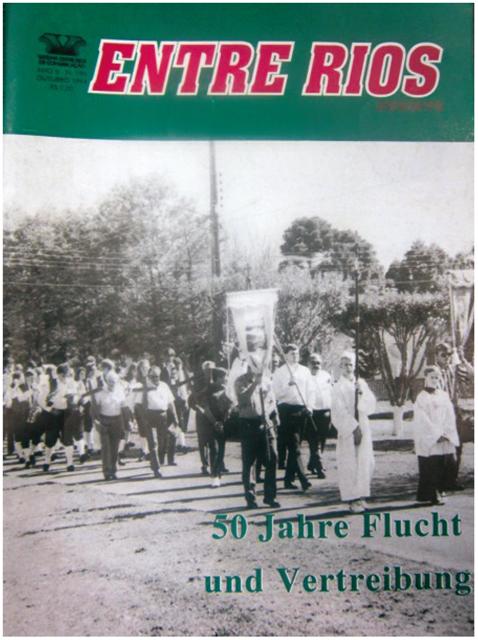Destination: The Americas
Brazil
Entre Rios | Sao Paulo | Immigration
Memory, resentment and the politization of trauma: narratives of World War II (Danube Swabians, Entre Rios, Guarapuava - Paraná) by Méri Frotscher, Marcos Nestor and Beatriz Anselmo Olinto, Oct 24, 2014
FINAL CONSIDERATIONS
During the collective remembrance of the 50th anniversary of the flight and expulsion in Entre Rios in 1994, traumatic experiences were remembered through the production and publication of "narratives of victims" (Figure 3). We can reflect on the role of that paper based on a question asked by the Argentine philosopher Maria Inés Mudrovcik: "how a community, whose different groups have experienced directly or indirectly traumatic events, ceases to be compulsively attached to its past and transforms the tragic events in exemplary memories to guide present actions?"75
Figure 3 Issue from October of 1994 about the "50 Years of the Flight and Expulsion". In the picture, we see the procession held every year in memory of the dead in Yugoslavia, which is organized always in October. Source: Entre Rios Magazine, year 8, n. 190, October, 1994.
The inclusion of the Danube Swabians in Brazil, in Entre Rios, by a colony project that created a diasporic community, favored the emergence of a public sphere in the German language, in which the subject of the expulsion even plays a role in the affirmation of this diasporic identity. The remembrance of the 50th anniversary of the Flucht und Vertreibung ("flight and expulsion"), in 1994, occurred in a social and political environment, in which the publication of "narratives of victims" that had experienced traumatic events sought to reinforce the contours of a local group identity. In other words, that remembrance, by editing testimonies and transforming the experience into memory, also affirmed a collective identity for all of the Danube Swabians of Entre Rios and not only for the generations that experienced the "flight and expulsion".
Footnotes
75 Maria Inés Mudrovcik, Historia, narración y memoria. Los debates actuales en filosofía de la historia, Buenos Aires, Ediciones Akal, 2005, p. 141. Freely translated from Spanish by Méri Frotscher.
DVHH < Destination: The Americas < Brazil < Entre Rios < Memory, resentment and the politization of trauma: narratives of World War II (Danube Swabians, Entre Rios, Guarapuava - Paraná) < FINAL CONSIDERATIONS


